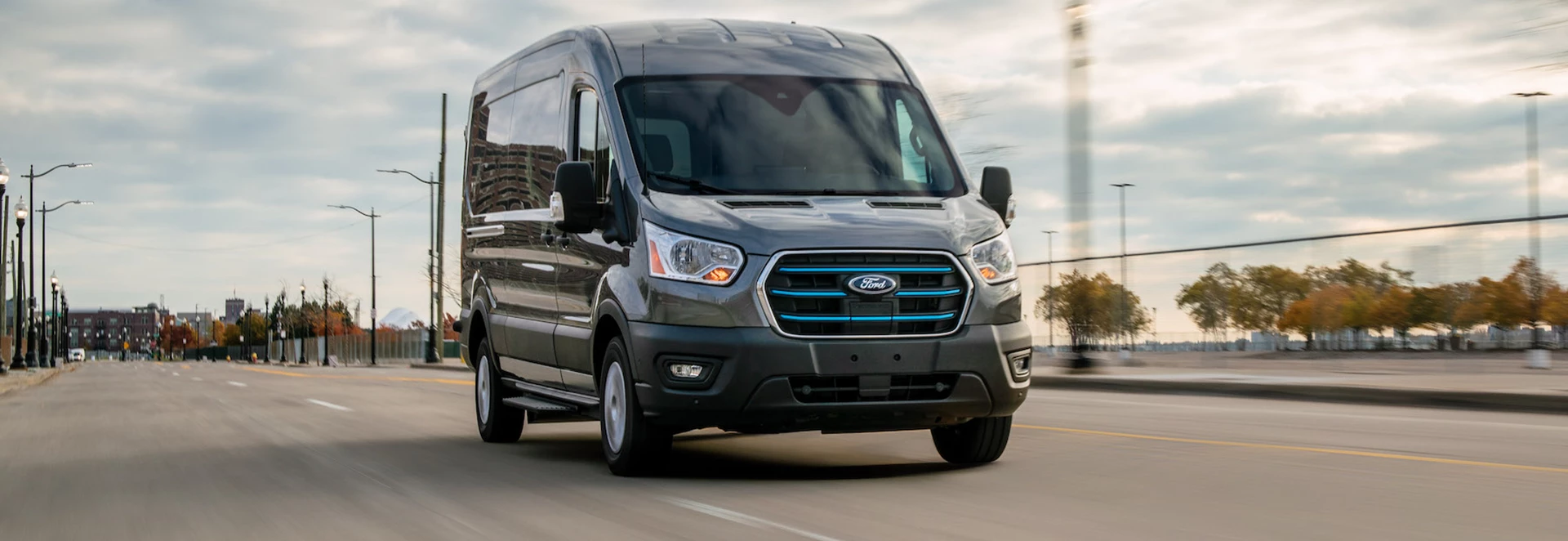Ford’s Transit has been a key tool for businesses for more than 50 years and remains one of the best-selling vans around.
But Ford faced a challenge in how to ensure the Transit remains relevant for the future, and in-line with the brand’s bold electrification strategy, Ford is readying an all-electric model for 2022, which will sit alongside diesel versions, as well as a plug-in hybrid version of the smaller Transit Connect.
Here’s what you need to know about the new Ford E-Transit.
Long electric range for a van
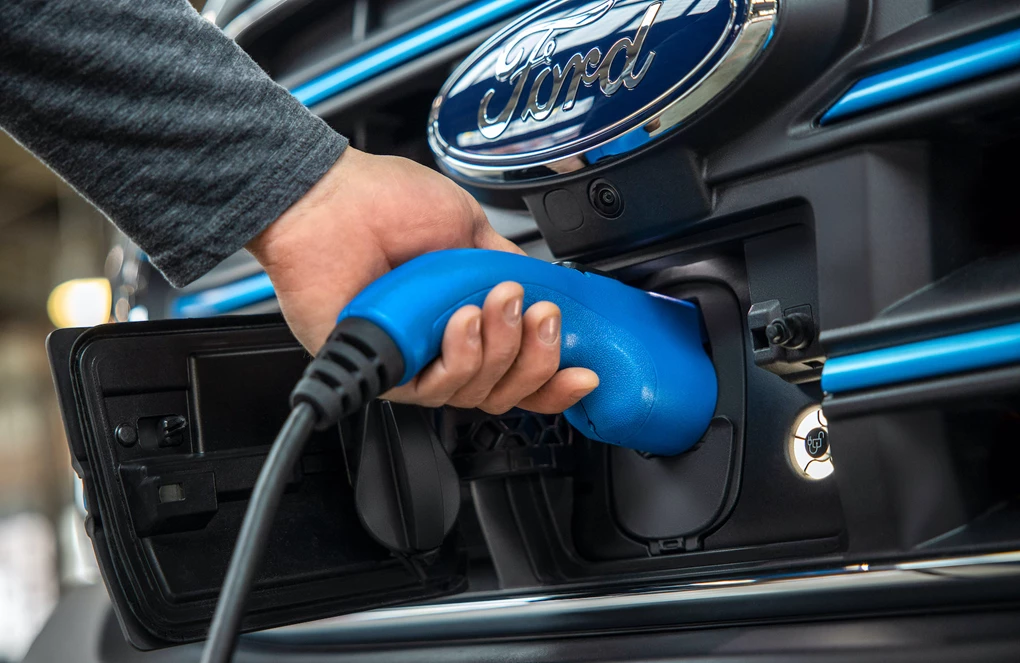
Many electric vans struggle with a small electric range that limits their appeal to anyone driving out of town – in fact, these battery-powered commercial vehicles are often seen as ‘last mile’ options.
The E-Transit aims to offer greater long-distance capability, though, and thanks to its large 68kWh battery, Ford claims it’s able to travel for up to 200 miles on a single charge, which is said to be three times what the average van driver does per day. However, as it can also charge at up to 115kW, it means the battery can be taken from 15 to 80 per cent in just over half an hour.
Huge range of versions to choose from
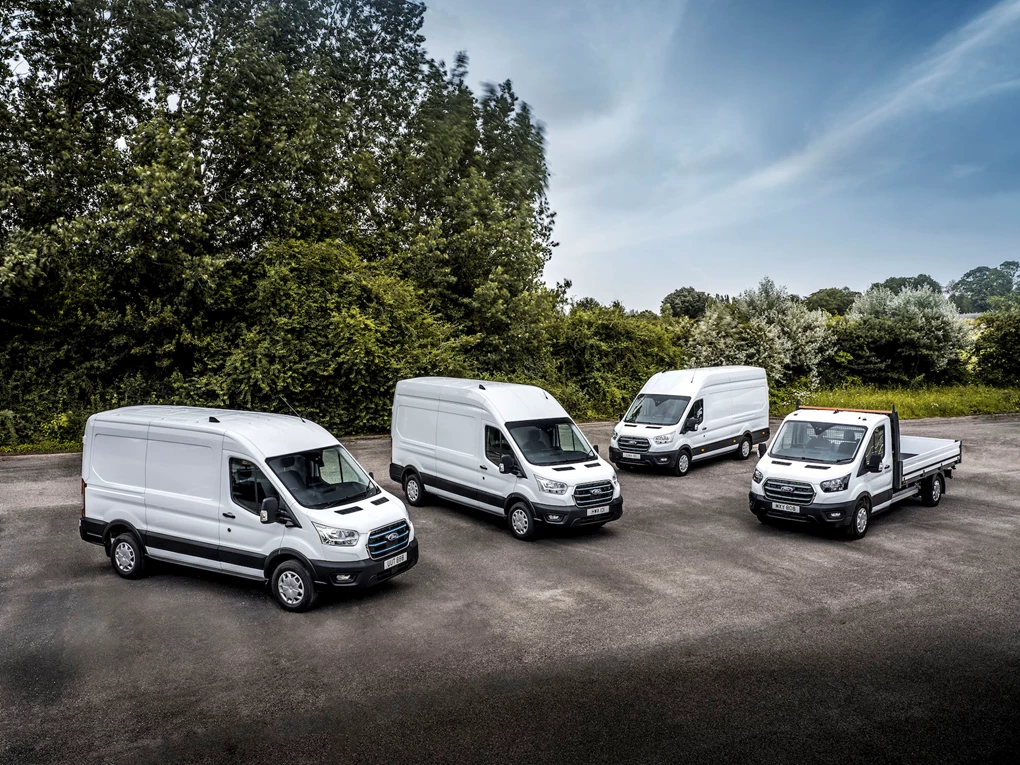
There’s no ‘one size fits all’ in the van world, and choice is absolutely key to ensuring there’s a model to suit most businesses and uses. Ford acknowledges this and will offer its E-Transit in a range of guises, including a van, double-cab-in-van and chassis van derivatives.
The models can also be converted for a range of uses with Ford’s qualified vehicle modification teams already making a refrigerator van, caged tipper and dropside body vehicles out of the model, with further planned.
Brimmed with the latest technology

There’s no ‘one size fits all’ in the van world, and choice is absolutely key to ensuring there’s a model to suit most businesses and uses. Ford acknowledges this and will offer its E-Transit in a range of guises, including a van, double-cab-in-van and chassis van derivatives.
The models can also be converted for a range of uses with Ford’s qualified vehicle modification teams already making a refrigerator van, caged tipper and dropside body vehicles out of the model, with further planned.
Brimmed with the latest technology
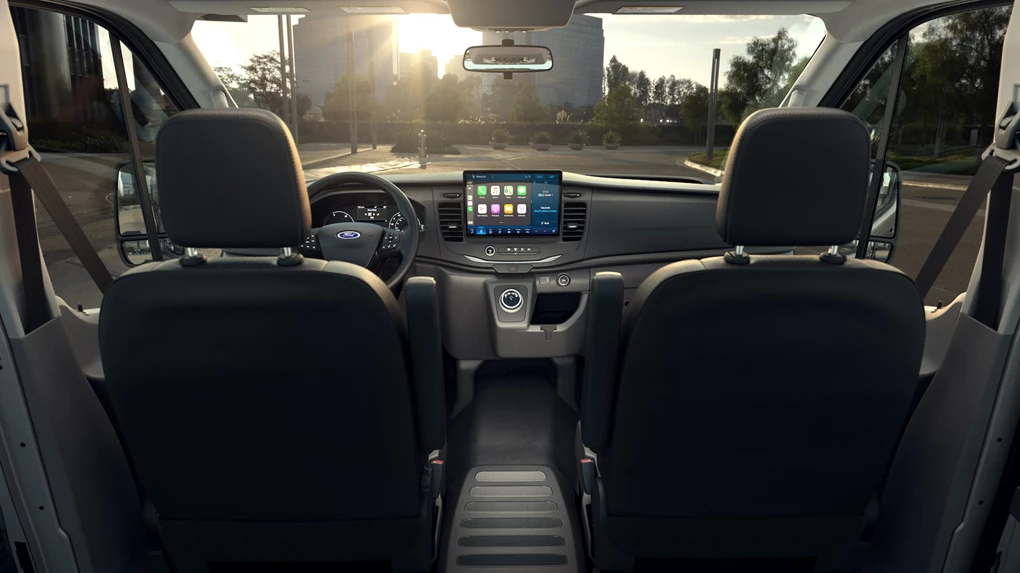
The E-Transit is also absolutely packed with the latest technology, featuring many features that are yet to be even introduced to the brand’s car line-up.
For starters there’s a new 12-inch touchscreen that uses Ford’s latest ‘Sync 4’ software that enables enhanced voice recognition, a cloud-based navigation and also important over-the-air updates that means the E-Transit will continue to be offered with new features as they come available.
A vast range of driver assistance tech is also available, including adaptive cruise control, a 360-degree camera system and reverse brake assist to avoid any collisions from the rear.
The ability to charge other electrical equipment from the E-Transit’s battery
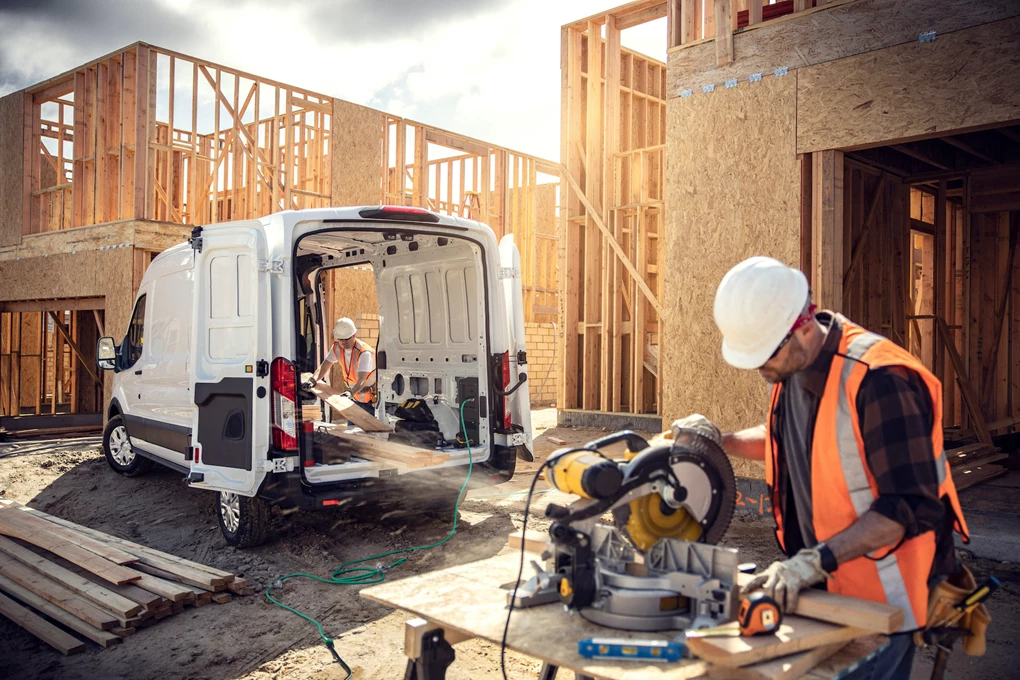
One feature that deserves special mention on the E-Transit is something called ‘Pro Power Board’. While optional, we reckon it’s something worth choosing as it essentially lets the van act as a mobile power source.
Ford says it can power tools and equipment up to 2.3kW, which will likely prove very useful for workers on the go. While it’s something offered on Hyundai’s new IONIQ 5, the E-Transit is the first commercial vehicle to be available with the feature.
Substantially cheaper running costs
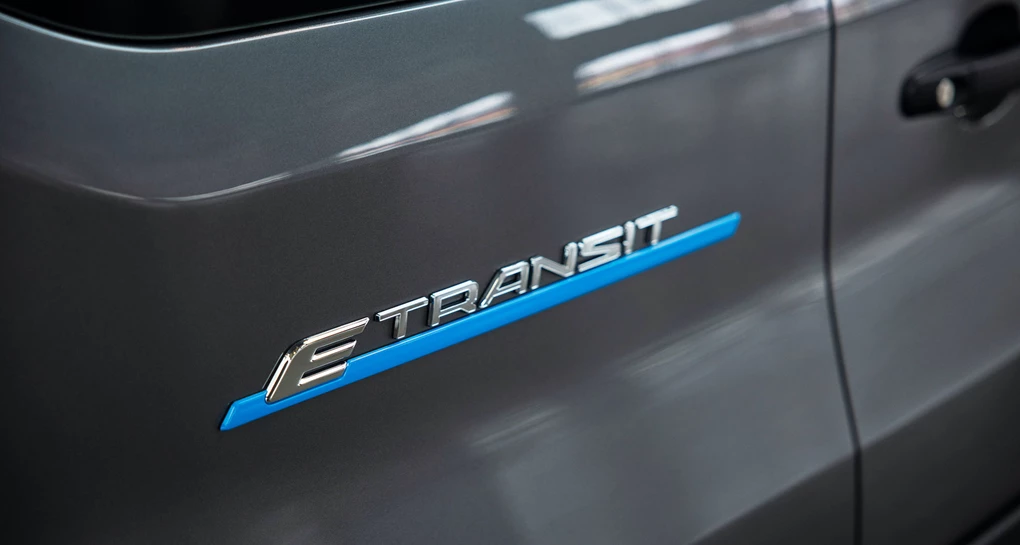
Another key draw to the E-Transit is the potential low running costs you get with it. While electric vehicles are known to be more affordable to run than a conventional petrol and diesel, the savings on offer on the E-Transit are seriously impressive.
Not only will there be savings on running on electric, rather than diesel, Ford has also calculated that servicing costs will be 40 per cent lower than with a diesel model. The firm also says the van will only need servicing once a year, regardless of mileage, which is said to be class-leading.
UK trials of the E-Transit are already well underway with companies like DPD and DHL Express, with first deliveries of the new electric van due in 2022.
Enquire on a new Ford